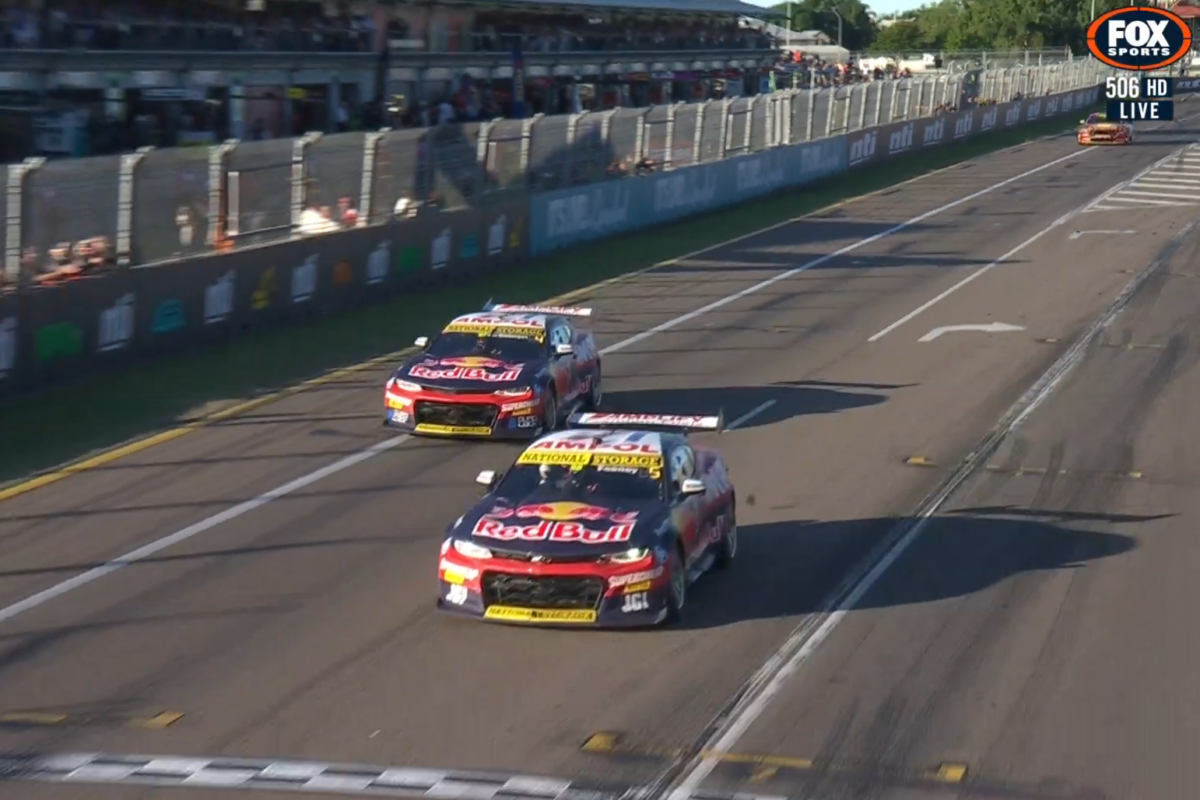

With the topic of team orders coming up at the NTI Townsville 500 and Formula 1 British Grand Prix, we ask for your thoughts, in this week’s Pirtek Poll.
Red Bull Ampol Racing’s Shane van Gisbergen was seemingly left aggrieved when he was instructed to let team-mate Broc Feeney back ahead of him in the closing stages of Race 17 of the Repco Supercars Championship, while Oscar Piastri was told to hold position behind McLaren team-mate Lando Norris during the opening stint at Silverstone.
Van Gisbergen had tried to argue that Feeney had worn out his rear tyres and hence was passed fairly, but Triple Eight Race Engineering Team Manager Mark Dutton said that the latter had only done so because it was he who was initially told to try and run down Andre Heimgartner for the final podium position.
Hours later, Piastri looked to have a pace advantage on second-placed Norris in the early stages of the British GP but was instructed to hold position and ultimately finished fourth after Mercedes’ Lewis Hamilton jumped him thanks to a fortunately timed Safety Car.
In both cases, team orders came into play.
To be clear, there is nothing new about team orders in in Supercars, and nothing illegal either, as was clarified in 2018 when Triple Eight invoked them to maximise van Gisbergen’s championship chances.
Certain parties are prohibited from invoking team orders but, since the start of 2018, not the teams themselves.
The philosophical question, though, is whether they should be.
The most prominent Supercars championship title is that of the drivers and, for the most part, everyone is invested in promoting hard, wheel-to-wheel racing.
In this case, Triple Eight was not so much keen on racing amongst its own cars, but it must be acknowledged that Triple Eight was also trying to give itself the best chance of overtaking a rival.
Furthermore, Triple Eight enters the cars – rather than van Gisbergen or Feeney as individuals – and would argue it has the right to maximise its performance across those two entries.
Triple Eight was trying to promote its competitive interests, without unfairly impacting on a rival, and, after all, various dictionary definitions of the word ‘team’ refer to working together.
Indeed, van Gisbergen was certainly being a team player earlier in Race 17 when, while strategically compromised relative to Feeney, he was passing cars in such a way that the #88 Camaro could easily follow him through.
One should also consider, using Townsville as a case study, whether or not team orders in fact added to the entertainment.
Neither Feeney nor van Gisbergen were capable of catching Heimgartner in the end, but the tension between Car #97 and the Triple Eight garage makes for a spicy story.
That may well have been more entertaining than an on-track battle when the team-mates invariably would have been more respectful of each other than their rivals anyway, although relatively recent Triple Eight history shows that is not always the case.
Regardless, the other pertinent question is how one would prevent team orders anyway.
A ban could be sidestepped by coded radio messages or pre-race planning, and attempts to close loopholes with further layers of regulation would likely be sidestepped somehow anyway, and/or have consequences in other areas.
So, what do you think? Should team orders be allowed? Cast your vote below in this week’s Pirtek Poll.




















Discussion about this post